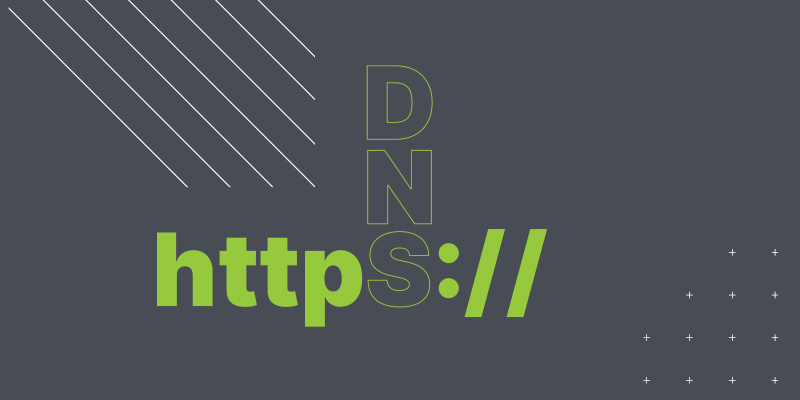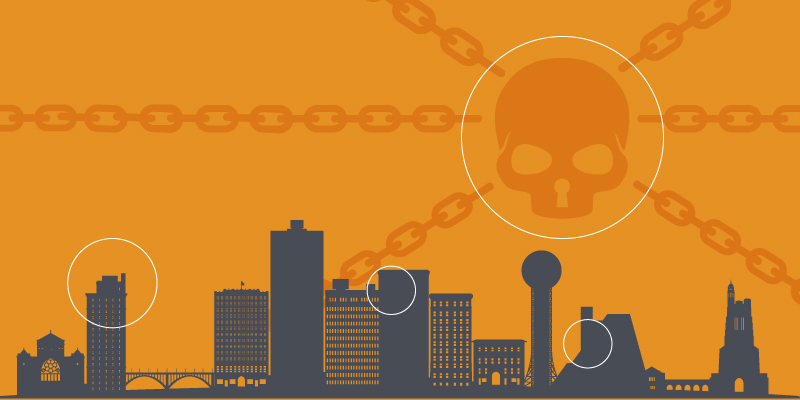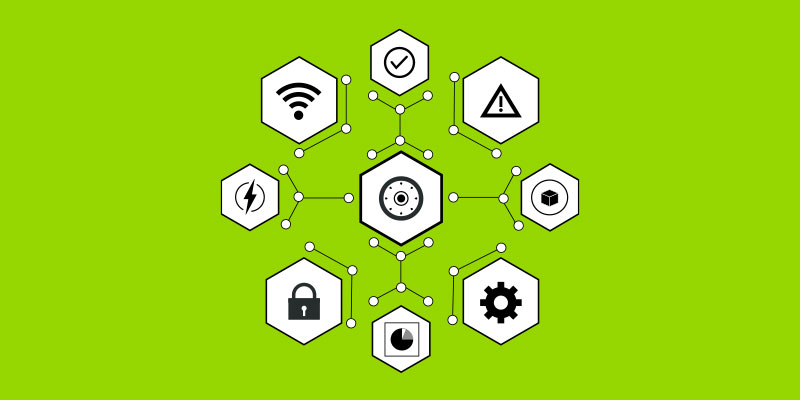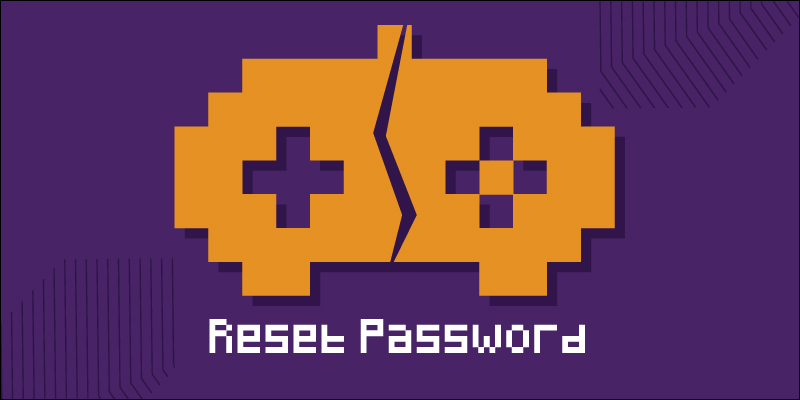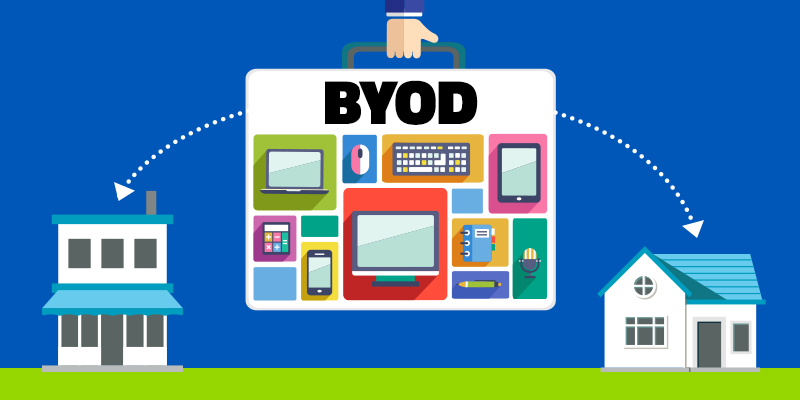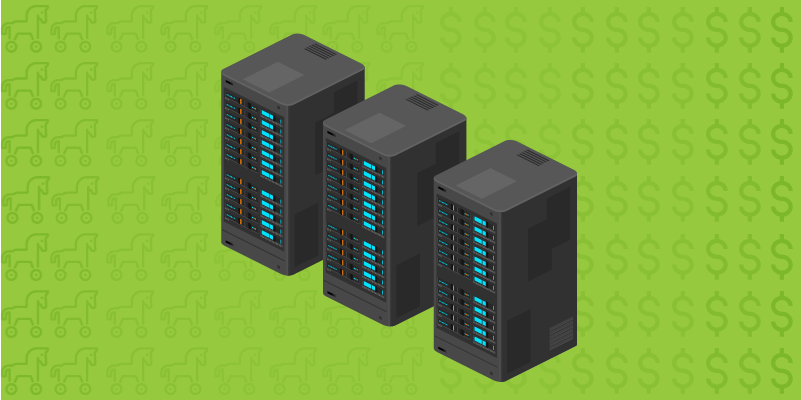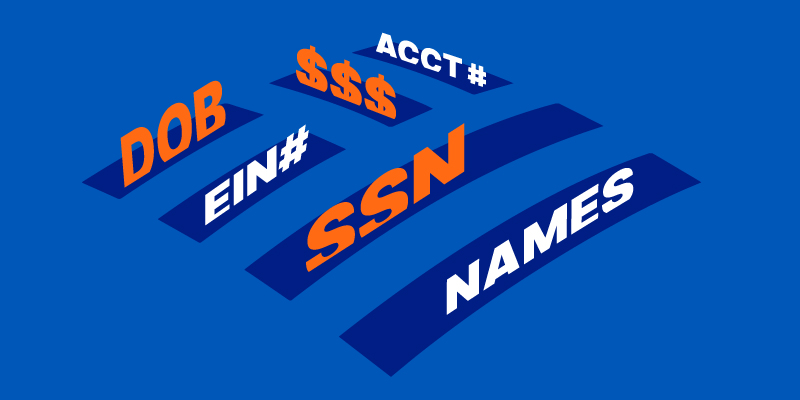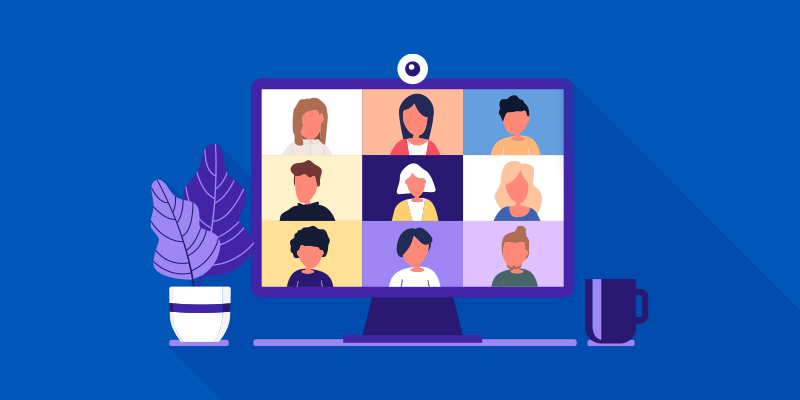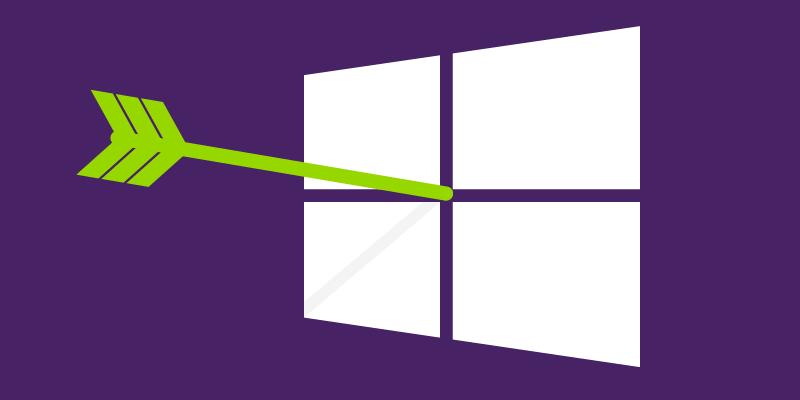DoH Is Here to Stay: Why Businesses Should Embrace It
While the proliferation of encrypted DNS is being driven by consumer privacy, businesses will want to take notice. Encrypted DNS – also known as DNS over HTTPS, or DoH – obscures internet traffic from bad actors. But it also has the potential to decrease visibility for IT admins whose responsibility it is to manage DNS requests for their organizations. So, what’s the solution? Strangely, DoH.
As previously mentioned, DoH is now the default for Mozilla Firefox. It’s also available in Google Chrome and other Chromium-based browsers. This is a win for consumers, who have newfound control over who can see where they’re going on the internet.
However, by surrendering control over DNS requests to the browser, IT administrators lose the ability to apply filtering to DNS requests. Encrypted DNS that skirts the operating system eliminates the visibility that IT admins need to ensure security for internet traffic on their networks. It also prevents the business from being able to run threat intelligence against DNS requests and identify dynamic malware that could circumvent consumer DoH implementations. This leads to gaps in security that businesses can’t afford.
Staying ahead of the curve
There is a way to ensure privacy over DNS requests while maintaining control and visibility into network activity. The solution is to apply DoH across the entire system, not just browser activity. By wresting control over DNS requests from the browser, the agent can instruct Firefox not to engage its DoH feature. The same holds true for Chrome users running DoH. These requests are passed back through the operating system, where the DNS solution can manage them directly. This helps support both filtering and visibility.
An advanced agent will manage DNS requests on the device securely through DoH so the requests go directly to the server with no other entity having visibility into them. At the same time, the agent can apply threat intelligence to ensure requests aren’t resolving to malicious destinations. Admins have visibility into all DNS requests, and the requests are encrypted.
When the agent detects a prohibited resource, it returns the IP address of a block page. So, if there’s a virus on the system and it’s trying to access a command and control server to deliver a malicious payload, it won’t be able to. It also prevents botnets from being able to connect since they also leverage DNS. For any process that requests something from the internet, if it doesn’t get the resource that it’s requesting, it’s not going to be able to act on it.
Privacy plus security
The novel coronavirus didn’t start the mobile workforce phenomenon, but it certainly has accelerated it. The traditional perimeter firewall with all systems and devices living behind it no longer exists. Modern networks extend to wherever users connect to the internet. This includes the router someone bought from a kid down the street, and the home network that was set up by a consulting company 10 years ago and hasn’t been patched or updated since.
When someone on their home network opens a browser and goes to their favorites, they’re not expecting to get phished. But if they’re resolving to an alternative IP address because DNS is not being managed, is broken or is being redirected, they may be exposed to phishing sites. Enter encrypted DNS as another layer of protection within your cyber resilience portfolio. It starts working against a higher percentage of threats when you stack it with other layers, reducing the likelihood of being infected. It also addresses a blind spot that allows exploits to go undetected.
Embracing DoH
Privacy is the main driver for DoH adoption by consumers, while business agendas are generally driven by security. As a business, controlling DNS requests allows you to protect both the business and the user. If you don’t have that control and visibility, the user is potentially more exposed. And, if you don’t apply threat intelligence and filtering to DNS requests, a user can more easily click on malware or land on a phishing site.
To learn more about encrypted DNS read the whitepaper or review the FAQs.

Old Habits vs. New Normal in the Time of Coronavirus
It didn’t take long for COVID-19 to completely alter the way we work. Businesses that succeed in this rapidly changing environment will be the ones that adapt with the same velocity. In our second installment from The Future of Work series, you’ll hear from Webroot Product Marketing Director George Anderson, who shares his perspective on how businesses will need to adapt and evolve to stay on course during and after the global coronavirus pandemic.
How has COVID-19 changed cybersecurity and cyber resilience planning? What will be the most important steps to take moving forward?
In some ways not at all. We were already existing in a fairly perimeter-less network world. There was already a hybrid between on- and off-network staff, and reviewing where data was being worked upon, accessed and secured, and asking how data was being processed and secured during its journey. Many businesses data was already split between user devices and the cloud.
Confidentiality, integrity and availability in the case of cyber-attacks or other forms of potential data loss need to be clearly understood as before, and any weaknesses addressed. The imperative is to have a safe data cloud in place both in terms of security and recovery.
The steps to take include:
- Setting up regular and if practical continuous risk assessment to get visibility of data risks
- Understanding where the greatest risks and weaknesses exist in people, process and technology
- Investing and allocating appropriate budget to address where the greatest data loss and compromises could and would now occur
What could the future look like after the coronavirus? Specifically, what will change in IT and business?
Not everyone will want to choose to continue working from home. While the savings in closing offices down are attractive to businesses, they are not necessarily the same for an employee whose home environment is not conducive to work. These employees may seek alternative employment to remove the burden of working from home if an office option is not available. IT has already, for the most part, moved to the cloud where it can, and remained on-prem where it needs to be because of security, compliance and control. The main IT imperatives will be factors like secure 5G and faster communications for better collaboration.
In business, people buy from people. And face-to-face interaction is the norm. While this will reduce in the near-term, in the long run, peoples’ wellness depends on social interaction. Businesses that ignore that will not thrive. However, businesses are generally going to be more open to remote working roles and a lot better positioned to recruit staff for remote work, without them necessarily being close to physical offices.
IT investments will shift in the coming months, what will take precedence for companies as they go back to ‘business as usual’?
The pandemic will make companies look, in broader terms, at the all the risks to their business. And they’ll use IT where practical to put protections and assistance in place. More holistic Disaster Recovery springs to mind as benefiting from this pandemic, as does better backup of user desktops that particularly among MSPs and SMBS has not been a priority in the past.
What advice do you have for SMBs who will need time and a renewed economy to recover?
There will be many opportunities as the economy comes back and many holes where competitors and others have failed. An approach that is flexible and can react to those opportunities is essential. So, look to business arrangements in IT, Finance, HR and other key areas that will let you maximize your ability to take advantage of new opportunities. If you have not looked to an MSP to help you in the past then now is the time to look at how experts in remote management an remote working like an MSP can help?
For a step by step guide on how to improve business cyber resilience click here.
Why You Need More than Built-In Antivirus Protection
Most major tech blogs have run some variation of the following headline in recent months: Is it worth paying for an antivirus solution anymore?
The insinuation, of course, is that built in antivirus solutions for Mac and Windows machines have progressed to such a point that it’s no longer worth reinforcing them with a paid solution.
While it’s sure to generate clicks, many of the answers from tech writers are either convoluted or hedged to the point of not really providing an answer. Let’s explore the question more here.
The state of built-in security
Even our own experts will join third-party voices in admitting that built-in solutions like Windows Defender Security Center (previously Windows Defender) have improved significantly in terms of effective malware protection.
“Windows Defender has come a long way since the days of Windows XP and Windows 7,” says Webroot security analyst Tyler Moffitt. “It’s better than we’ve ever seen. But it’s still not enough.”
PC Magazine lead analyst Neil Rubenking recently said much the same, writing “Windows Defender’s own developers seem to consider it a Plan B, rather than a main solution. If you install a third-party antivirus, Windows Defender goes dormant, so as not to interfere.”
While many built-in antivirus solutions do reasonably well at turning away well-known strains of malware, it’s the new, sophisticated variations that tend to have success outsmarting them.
“Top-tier campaigns like Bitpaymer and Ryuk ransomware, or Trickbot and dridex Trojans—these are all going to get past a lot of built-in antivirus software.”
Evasive scripts are another source of trouble for much built-in security software. This newly common type of attack relies on a user clicking on a link in a “malspam” email, which then downloads a malicious payload. Interfaces like Command Line and PowerShell are often used to launch these attacks. If those terms are unfamiliar, it’s simply important to remember that they are script-based and regularly evade built-in security.
“There is a growing trend that many people feel that they don’t need any security software on their computers and that out-of-the-box security is enough,” says Moffitt. “The reality is that it’s not enough and built-in software has proven time and time again that it will be beaten by malware.”
What you really need from your online security
First off, multi-layered security. Traditional malware isn’t the only type of threat to watch out for nowadays. In addition to the script-based attacks mentioned above, mal-vertising campaigns are frequently launched from legitimate sites using exploits in runtimes like Java, Silverlight and flash. Drive-by downloads and pop-up ads can secretly install crypto miners and malicious programs on a machine without a user knowing it, some miners don’t even need to download, but your browser will be hijacked and max out CPU to mine cryptocurrency. And phishing campaigns are becoming increasingly favored by cybercriminals based on their cost-effectiveness.
“While free solutions offer better security than most built-in solutions, you can’t beat premium solutions that utilize multiple layers of security and are backed by cutting-edge technologies like massive-scale machine learning and contextual analysis engines,” says Moffitt.
What else should you look for in an antivirus solution for the home? Here are a couple features:
- Something lightweight—By that, we mean something that doesn’t take up a lot of memory or resources on your machine. Gamers should especially insist on this quality from an antivirus, but it should appeal to a broader market as well. “This is especially useful if you’re using your own devices to work from home during the pandemic and are worried that security solutions would slow your machines down,” says Moffitt.
- Customer service—Something you’re unlikely to get from a built-in provider. It’s hard to underestimate the value of a dedicated team standing by to help you troubleshoot if something goes wrong. Especially if tech isn’t your sweet spot, you don’t want to commit to long periods of waiting for a response from a global tech giant, or worse, no support team at all.
- A VPN for privacy—This is especially important if working from home is your new normal. “Not only are VPNs a great way to add a layer of protection by filtering out malicious webpages like phishing, but they are also a must if you are handling customer information for work,” says Moffitt. Making sure that critical data is protected at rest and in transit could help shield your company from major data security compliance fines.
It’s no surprise that we advocate not relying on built-in antivirus protection to safeguard your data and devices. But our concerns aren’t unfounded. We’ve simply seen too many fails to protect at the level they promise. Expect more from your online security solutions and strengthen your digital fitness, today.
Cyber News Rundown: Knoxville Rocked by Ransomware
Ransomware Knocks Out Knoxville, TN
Knoxville, Tennessee officials have been working over the past week to secure systems and determine if any sensitive information was stolen after a ransomware attack was identified. Fortunately, city IT staff were able to quickly implement security protocols and shut down critical systems before the infection could spread. Within the day, many of the targeted city domains were redirected to new sites, allowing city services to operate normally.
Magecart Attacks Multiple Online Retailers
Malicious Magecart scripts have been identified in recent months on multiple domains belonging to online retailers. Following the registration of a fake domain related to Claire’s in March, several weeks of inactivity passed before code was again spotted on Claire’s websites being used to intercept payment card transactions. It was finally removed from the company’s domains in the second week of June, but not before leaving thousands of customers potentially compromised.
Maze Ransomware Infiltrates US Chipmaker
The computer systems of MaxLinear, a U.S. computer chip maker suffered a Maze ransomware attack that forced them to take their remaining systems offline. Officials discovered that for more than a month there was unauthorized access resulting in the leak of over 10GB of stolen data from an alleged trove of over 1TB of total data. MaxLinear has since refused to pay the ransom and been in contact with affected customers. The manufacturer does not believe future operations will be delayed.
Over 100 NHS Email Accounts Compromised
Within the last two weeks a phishing campaign hit the National Health Service (NHS), successfully accessing over 100 internal email accounts. The affected accounts make up an extremely small portion of total NHS email accounts, of which there are nearly 1.4 million in total. The hacked accounts were used to distribute a malicious spam campaign designed to steal credentials through a fake login page.
DraftKings Announces Ransomware Attack Amidst Merger
Following the multi-way merger that resulted in the formation of DraftKings Inc., DraftKings revealed that one of the subsidiaries, SBTech, suffered a ransomware attack within weeks of the merger being finalized. While it is still not known what variant of ransomware was used in the cyberattack, officials have determined that no information was compromised. Rather, the attack was focused on taking their online systems down. Though SBTech was required to create a significant emergency fund preceding the merger, the deal seems to have been unaffected by the attack.
We Need the Security Benefits of AI and Machine Learning Now More Than Ever
As these times stress the bottom lines of businesses and SMBs alike, many are looking to cut costs wherever possible. The problem for business owners and MSPs is that cybercriminals are not reducing their budgets apace. On the contrary, the rise in COVID-related scams has been noticeable.
It’s simply no time to cut corners in terms of cybersecurity. But there is hope. Cybersecurity, traditionally suffering from a lack of qualified and experienced professionals, can be a source of savings for businesses. How? Through the automation and efficiency that artificial intelligence (AI) and machine learning can offer.
AI & ML in Today’s Cybersecurity Landscape
By way of background, Webroot has been collecting IT decision makers’ opinions on the utility of AI and machine learning for years now. Results have been…interesting. We’ve seen a steady rise in adoption not necessarily accompanied by an increase in understanding.
For instance, during a 2017 survey of IT decision makers in the United States and Japan, we discovered that approximately 74 percent of businesses were already using some form of AI or ML to protect their organizations from cyber threats. In 2018, 74 percent planned even further investments.
And by 2019, of 800 IT professional cybersecurity decisionmakers across the globe, a whopping 96 percent reported using AI/ML tools in their cybersecurity programs. But, astonishingly, nearly seven out of ten (68%) of them agreed that, although their tools claim to use AI/ML, they aren’t sure what that means.
Read the full report: “Do AI and Machine Learning Make a Difference in Cybersecurity?”
So, are these tools really essential to securing the cyber resilience of small businesses? Or are they unnecessary luxuries in an age of tightening budgets?
AI and ML in the Age of Covid-19
Do AI and ML have something unique to offer businesses—SMBs and MSPs alike—in this age of global pandemic and remote workforces?
We asked the topically relevant question to it to one of the most qualified individuals on the planet to answer it: literal rocket scientist, BrightCloud founder, and architect behind the AI/ML engine known as the Webroot Platform, Hal Lonas.
Can AI and machine learning tools help people do their jobs more effectively now that they’re so often remote?
Put directly, the Carbonite and Webroot CTO and senior VP’s response was bullish.
“AI and machine learning tools can absolutely help people do their jobs more effectively now more than ever,” said Lonas. “Security professionals are always in short supply, and now possibly unavailable or distracted with other pressing concerns. Businesses are facing unprecedented demands on their networks and people, so any automation is welcome and beneficial.”
In machine learning, a subset of AI, algorithms self-learn and improve their findings and results without being explicitly programmed to do so. This means a business deploying AI/ML is improving its threat-fighting capabilities without allocating additional resources to the task– something that should excite cash-strapped businesses navigating tough economic realities.
Our AI/ML report backs up Lonas’s assertion that these technologies make a welcome addition to most business security stacks. In fact, 94 percent of respondents in our survey reported believing that AI/ML tools make them feel more comfortable in their role.
“People who use good AI/ML tools should feel more comfortable in their role and job,” he asserts. “Automation takes care of the easy problems, giving them time to think strategically and look out for problems that only humans can solve. In fact, well-implemented tools allow security workers to train them to become smarter—in effect providing the ‘learning’ part of machine learning. Each new thing the machine learns makes more capable.”
AI/ML adopters also reported:
- An increase in automated tasks (39%)
- An increase in effectiveness at their job/role (38%)
- A decrease in human error (37%).
- Strongly agreeing that the use of AI/ML makes them feel more confident in performing their roles as cybersecurity professionals. (50%)
So despite some confusion about the role these technologies play in cybersecurity (which we think vendors could help demystify for their clients), their effects are clearly felt. And because cybercriminals are willing to adopt AI/ML for advanced attacks, they may force the hands of SMBs and MSPs if they want to keep up in the cybersecurity arms race.
Given today’s limited budgets, dispersed workforces, and increasingly sophisticated attacks, the time may never be better to empower professionals to do more with less by automating defenses and freeing them to think about big-picture cybersecurity.
Cyber News Rundown: Nintendo Accounts Breached
Nintendo Accounts Breached
Stemming from a cyber-attack back in April, Nintendo has just announced that roughly 300,000 user accounts have been compromised, though most belong to systems that are now inoperable. From the excessive unauthorized purchases, the attackers likely used credential-stuffing methods to access accounts and make digital purchases through PayPal accounts that were already logged in. Nintendo has since contacted the affected customers and has begun pushing out mandatory password resets.
Kingminer Botnet Locks Down Entry Points Behind Them
After nearly two years of operation, the owners of the Kingminer crypto jacking botnet have taken up a new tactic of patching the very vulnerabilities they used to illicitly access systems. This implementation is likely being used to block any other malicious campaigns from accessing the compromised systems and net them larger profits. By using the EternalBlue exploit and patching it behind themselves, they can brute force their way into any vulnerable system and then keeping their own crypto mining scripts active for an increased amount of time before being discovered.
Honda Shuts Plants After Ransomware Attack
Several Honda plants around the world have recently closed due to a ransomware attack that has targeted several manufacturing systems. The shutdown came only hours after a new Snake ransomware sample was uploaded to Virus Total and was seen attempting to contact an internal site belonging to Honda. Currently, officials for Honda are still working to determine exactly what parts of their systems were affected and if any personally identifiable information was compromised.
Scammers Created Fake SpaceX YouTube Channels to Steal Cryptocurrency
Multiple malicious YouTube accounts have changed their names to keywords relating to SpaceX in order to scam viewers out of Bitcoin cryptocurrency donations. While it should be obvious that these channels are not the legitimate SpaceX account based solely on the number of subscribers, the fake channels have also been livestreaming old recorded SpaceX interviews with Elon Musk, to improve their legitimacy. Unfortunately, during the livestreams, the channels promote cryptocurrency scams in the chat section to entice other viewers to send in a small amount of cryptocurrency with the promise of a significant amount more being sent back.
Florence, Alabama Pays Ransom Demand
In the last week, officials for Florence, Alabama have been working to negotiate with the authors of the DoppelPaymer ransomware attack that took down the city’s email systems. Though the initial ransom amount was 38 Bitcoins, or the equivalent of $378,000, the security team that was brought in was able to drop the demand to 30 Bitcoins, or $291,000, which the city has decided to pay. It is still unclear exactly what information may have been stolen or accessed, the Mayor of Florence concluded that it was best to just pay the ransom and hope their information is returned and their systems are decrypted.
Your Data, Their Devices: Accounting for Cybersecurity for Personal Computers
Nestled within our chapter on malware in the 2020 Webroot Threat Report is a comparison of infection rates between business and personal devices. The finding that personal devices are about twice as likely as business devices to become infected was always significant, if not surprising.
But the advent of the novel coronavirus—a development that followed the publication of the report—has greatly increased the importance of that stat.
According to a joint study by MIT, Stanford, and the National Bureau of Economic Research (NBER), more than a third (34%) of Americans transitioned to working from home as a result of COVID-19. They join approximately 14.6% of workers already working from home to bring the total to nearly half the entire American workforce.
During remote work many employees are forced or simply able to use personal devices for business-related activities. This presents unique security concerns according to Webroot threat analyst Tyler Moffitt.
“In a business setting,” he says, “when you’re given a corporate laptop it comes pre-configured based on what the IT resource considers best practices for cybersecurity. This often includes group policies, mandatory update settings, data backup, endpoint security, a VPN, et cetera.”
Individuals, on the other hand, have much more freedom when it comes to device security. They can choose to put off updates to browser applications like Java, Adobe, and Silverlight, which often patch exploits that can push malvertising. They can opt to not install an antivirus solution or use a free version. They can ignore the importance of backing up data altogether.
These risky practices threaten small and medium-sized businesses (SMBs) both immediately and when workers gradually return to their shared office spaces as the virus abates.
As our report notes, “With a higher prevalence of malware and generally fewer security defenses in place, it’s easier for malware to slip into the corporate network via an employee’s personal device.”
What’s at stake, for SMBs, is the loss of mission-critical business data due to device damage, data theft via phishing and ransomware, and GDPR and CCPA fines for data breaches. Any of these threats on their own could be existential for SMBs.
What can businesses do to prevent BYOD-enabled data loss?
“Super small businesses may not have the luxury of outlawing all use of personal devices,” says Moffitt. “BYOD is a fact of life now, especially with so many individuals at home, using home computers.”
But employers aren’t out of luck entirely. They can still purchase for their employees, and encourage the use of, several essential security tools. These include:
- Endpoint security software – Employers should provide endpoint security for home devices when necessary. When it comes to free solutions, you get what you pay for in terms of protection. Currently, there’s the expectation, especially among younger people, that built-in antivirus solutions are enough for blocking advanced threats. In reality, layered security is essential.
- Backup and recovery software – Many SMBs rely on online shared drives for collaborating. This is dangerous because a single successful phishing attack can unlock all the data belonging to a company. GDPR and CCPA fines don’t differentiate between data stolen from personal or business devices, so this level of risk is untenable. Make sure data is backed up off-site and encrypted.
- A VPN – IT admins or contractors should ensure that any sensitive company data requires a secure VPN connection. Especially with employees connecting on public or unsecure networks, it’s important to guard against snooping for data in transit.
- Secure RDPs – Remote access can be a great option when working from home, but it must be done securely. Too often unsecured RDP ports are the source of attacks. But, when encrypted and protected by two-factor authentication, they can be used to access secure environments from afar. Many are even free for fewer than five computers.
- User education – Security awareness training is one of the most cost-effective ways of protecting employees from attack on their own devices. Phishing attacks can be simulated and users in need of additional training provided it at very little additional cost. When compared to a data breach, the cost of a few licenses for security training is miniscule.
Collaboration over coercion
It’s difficult to mandate security solutions on personal devices, but managers need to at least have this conversation. Short of installing “tattleware,” this has to be a collaborative rather than a coercive effort.
“You can’t enforce a group policy on a computer or a network that you don’t own,” reminds Moffitt. “Ideally, yes, give each employee a corporate laptop to work at home that’s securely configured. But if that’s not possible, work with employees to ensure the right steps are taken to secure corporate data.”
Companies should work with IT consultants to source high-performing versions of the solutions mentioned above and cover their cost if it’s understood that personal devices should be used during this period of working from home. If taken advantage of, it can be an opportunity to foster a culture of cyber resilience and your organization will come out stronger, wherever your employees are located.
Cyber News Rundown: Trickbot Silently Targets Servers
TrickBot Silently Targets Servers
Knowing that many domain controller servers are rarely shutdown or rebooted, the authors of TrickBot have made some changes to allow the infection to run from memory. While this can be detrimental to the payload, as a reboot could easily remove it, the stealth approach could let the infection cause major havoc on systems that aren’t routinely restarted. Though TrickBot is normally dropped as a secondary infection from Emotet, it’s taken this new stealth approach to move across networks more easily.
Stenography Makes Leaps into Industrial Cyberattacks
Researchers have been following a new trend of incorporating multiple levels of steganography into cyber attacks focused mainly on large industries. The attacks are specified for each victim, including a language localization script that only executes if the local OS is in the right language and using macros to launch hidden malicious PowerShell scripts that require no additional input. The scripts, when executed, communicate with imgur.com or other image hosting sites to grab pictures with malicious code hidden in the pixels that eventually drops an encrypting payload.
Flaw in Apple Sign-in Nets Bounty Hunter $100,000
An authentication flaw has been discovered within the Apple sign-in feature for third-party sites that could allow an attacker to forge fake accounts if the victim hadn’t chosen their own email address to be identified. If a victim chooses not to do so, Apple creates a unique email ID that is used to create a JSON web token (JWT) to sign in the user. This could easily be forged alongside the email ID to gain unlimited access to any account. The researcher who found the bug and reported it to the Apple Security Bounty Program was rewarded with $100,000.
Ransomware Authors Begin Data Auction
The authors behind several prominent ransomware campaigns, including Sodinokibi and REvil, have begun an auction for stolen data on their dark web site. Currently, there are two auctions active on the site, one with data belonging to an unnamed food distributor and the other with accounting and financial information for an unnamed crop production company from Canada. The auctions have starting prices of $55,000, along with fees to be paid in Monero cryptocurrency because of its anonymity and ease of direct payment from victims.
San Francisco Employee Retirement Database Compromised
A vendor conducting a test on a database belonging to the San Francisco Employee Retirement Systems (SFERS) recently noticed some unauthorized access to the database containing records on 74,000 members. Though the database didn’t contain Social Security Numbers, it did contain a trove of personally identifiable information including names, addresses, and birthdates. Fortunately, the database was using old data for the test and had nothing newer than 2018. Nevertheless, SFERS officials are offering credit and identity monitoring services for affected victims.
Cyber News Rundown: Bank of America Breach Reveals PPP Info
Bank of America Breach Reveals PPP Information
After processing over 300,000 Paycheck Protection Program applications, Bank of America has revealed that a data breach occurred within the U.S. Small Business Administration’s program that allowed all other SBA-authorized lenders to view highly sensitive data. The data includes tax information and social security numbers relating to both businesses and their owners and could have extremely devastating effects in the wrong hands. Fortunately, the SBA secured the compromised data within a day of being notified and Bank of America has reached out to affected customers offering of two years of identity theft protection. null
Bank of Costa Rica Suffers Data Breach
Threat actors working for the Maze group recently claimed to have belonging to millions of Bank of Costa Rica customer accounts, a claim that was quickly refuted by the bank itself. Within a week, Maze began publishing proof of their bounty and promised to continue posting records if the bank fails to improve their current security. Maze also claimed to have accessed the bank’s systems on multiple occasions to determine if security had improved but chose not to encrypt their systems as the second breach occurred during the COVID-19 pandemic.
Old LiveJournal Breach Data Re-emerges
Researchers have been looking into a recent data dump that appears to have originated from the 2014 LiveJournal breach and contains over 33 million records up to 2017. It is hard to precisely date the breach, as LiveJournal is a Russian-owned journaling service and never reported it, though many LiveJournal users were targeted in a past spam extortion email campaign. More recently, users of Dreamwidth, which shares the LiveJournal codebase, has seen reports of compromised accounts.
Turla Hackers Grabbing Antivirus Logs to Check for Detection
One of the largest state-sponsored hacker groups, Turla, has turned their attention to accessing antivirus logs on infected systems to determine if their malicious activity has been discovered. With the use of ComRAT V1 (and later versions), Turla has been gaining highly sensitive information from major national organizations for over a decade and continues to improve on their methods. By viewing the logs created by local antivirus software, the attackers can adjust more quickly to avoid future detections.
New COVID-19 Tracker Drops [F]Unicorn Ransomware
The latest to capitalize on the public’s pandemic fears, a new fake COVID-19 tracing app has been targeting systems in Italy by dropping a new ransomware variant dubbed [F]Unicorn. The malicious payload comes disguised as a file from the Italian Pharmacist Federation. It then directs the victim to a beta version of the yet-to-be-released Immuni tracing app, showing a fake tracing dashboard as the encryption process begins. The ransomware demands a 300-Euro payment but displays an invalid email address, so users would be unable to prove payment to the attackers even if they choose to pay.
The Future of Work: Being Successful in the COVID Era and Beyond
Working from home is no longer something some of us can get away with some of the time. It’s become essential for our health and safety. So, what does the future of work look like in a post-COVID world?
We asked some of our cybersecurity and tech experts for their insights, which we’ll be presenting in a series entitled The Future of Work. In this installment, we’ll cover the qualities that will separate companies able to make smooth transitions to new ways of working from those that can’t. Plus, we’ll examine the effects the pandemic and our response to it have on workplace culture.
What are hallmarks of organizations that will successfully navigate our new workplace realities?
The COVID-19 crisis has forced employers to more fully consider the broader humanity of their employees. With parents becoming teachers and caretakers for ill, often elderly loved ones, greater levels of empathy are required of management. Now, with a lagging world economy and even experts unsure of what shape the current recession will take, financial stress will likely be added to the long list of anxieties facing the modern workforce.
As remote work continues to be a norm in industries like tech, boundaries between home and work life will continue to be murky. This, says Webroot product marketing manager George Anderson, presents opportunities for effective leaders to stand out from their peers.
“Leadership matters now more than ever,” says Anderson, “and being truthful matters even more. Your staff is worried, and platitudes won’t help. They need real communication based on real facts explaining why a company is making certain decisions. Being empathetic, sharing in employee concerns, involving and demonstrating how you value your staff—whether at executive or managerial level—will impact loyalty, dedication, and future business performance.”
Forbes notes that a more empathetic work culture is a silver lining arising from the pandemic that won’t be easily undone. We now know not just our coworkers’ personalities, but also their home office setups, their pets, children, and even their bookshelves. That fuller understanding of the person behind the position will hopefully lead to an enduring human-centric shift in the workplace.
Long-term, how will office culture change? What policies should change once everyone is physically back at work?
Relatedly, office cultures are likely to change in irreversible ways. Even as we return to physical offices, large events like company all-hands meetings may be attended virtually from personal workspaces, and large team lunches may become rarities. Companies may even choose to alternate days in and out of the office to keep the overall office population lower.
“People will become more comfortable with video calling, screen sharing, and online collaboration,” predicts Anderson, “even between colleagues present in the same office. Boundaries will become blurred and we will find new ways to stay in touch and maintain our human connections by leveraging advanced collaboration solutions in new but secure ways.”
Personal hygiene will also undoubtedly become a bigger aspect of physical office culture. In its guidelines for safely returning to work, the CDC recommends installing a workplace coordinator charged with implementing hygiene best practices office wide. Suggested measures include increasing the number of hand sanitizing stations available to workers, relaxing sick leave policies to discourage ill workers from coming to the office, modernizing ventilation systems, and even daily temperature checks upon entering the building.
“Some of these hygiene measures will be single events, not the future of office work,” notes Anderson. “Others will have more long-term impacts on the way we work together.”
Given the visible impact some measures will have around the office, it will be impossible for them to not affect culture. Because routines like temperature checks may be considered intrusive, it’s important the reasoning behind them be communicated clearly and often. Stressing a culture of cleanliness as a means of keeping all workers healthy and safe can enforce a common bond.
Cybersecurity remains imperative
Cyber resilience isn’t the only aspect of overall business resilience being tested by COVID-19, but it’s a significant one. The cyber threats facing today’s remote workforces differ in key ways from those faced in the past, so its important companies reevaluate their cyber defense strategies. To do our part to help, we’re extending free trials on select business products to 60 days for a limited time. Visit our free trials page or contact us for more information.
Why Your Cyber Resilience Plan Doesn’t Include Windows 7
Our 2020 Threat Report shows increasing risks for businesses and consumers still running Windows 7, which ceased updates, support and patches earlier this year. This creates security gaps that hackers are all too eager to exploit. In fact, according to the report, malware targeting Windows 7 increased by 125%. And 10% of consumers and 25% of business PCs are still using it.
Webroot Security Analyst Tyler Moffitt points out that a violation due to a data breach could cost a business $50 per customer per record. “For one Excel spreadsheet with 100 lines of records, that would be $50,000.” Compare that with the cost of a new workstation that comes pre-installed with Windows 10 at around $500, and you quickly realize the cost savings that comes with offloading your historic OS.
Windows 10 also has the added advantage of running automatic updates, which reduces the likelihood of neglecting software patches and security updates. Continuing to run Windows 7 effectively more than doubles the risk of getting malware because hackers scan for old environments to find vulnerable targets. Making matters worse, malware will often move laterally like a worm until it finds a Windows 7 machine to easily infect. And in a time when scams are on the rise, this simple OS switch will ensure you’re not the weakest link.
While businesses are most vulnerable to Windows 7 exploits, consumers can hardly breathe easy. Of all the infections tracked in the 2020 Threat Report, the majority (62%) were on consumer devices. This does, however, create an additional risk for businesses that allow workers to connect personal devices to the corporate network. While employees work from home in greater numbers due to COVID-19, this particular security risk will remain even higher than pre-pandemic levels.
Layers are key
As Moffitt points out, no solution is 100% safe, so layering solutions helps to ensure your cyber resilience is strong. But there is one precaution that is particularly helpful in closing security gaps. And that’s security awareness training. “Ninety-five percent of all infections are the result of user error,” Moffitt says. “That means users clicking on something they shouldn’t thus infecting their computer or worse, a entire network.” Consistent training – 11 or more courses or phishing simulations over a four- to six-month period – can significantly reduce the rate at which users click on phishing simulations.
Also, by running simulations, “you get to find out how good your employees are at spotting scams,” Moffitt says. “If you keep doing them, users will get better and they will increase their efficacy as time goes on.”
Fight cyber-risks with cyber resilience
The best way to close any gaps in protection you may have is to deploy a multi-layered cyber resilience strategy, also known as defense-in-depth. The first layer is perimeter security that leverages cloud-based threat intelligence to identify advanced, polymorphic attacks. But since cyber resilience is also about getting systems restored after an attack, it’s also important to have backups that enable you to roll back the clock on a malware infection.
With so many people working from home amid the global coronavirus pandemic, it’s increasingly critical to ensure cyber resilient home environments in addition to business systems. Find out what major threats should be on your radar by reading our complete 2020 Threat Report.
Pay Attention to the Hacker Behind the Hoodie
There’s a pretty common misconception among small businesses and medium-sized businesses (SMBs) that hackers only target large organizations. Unfortunately, this belief couldn’t be further from the truth. In fact, according to the most recent Verizon Data Breach Investigations Report, more than 70% of cyberattacks target small businesses. Additionally, many attacks are now shifting to target managed service providers (MSPs), specifically because breaching an MSP can give hackers access to their entire SMB customer base.
Why are hackers targeting SMBs?
Simply put— it’s easy money. First, the smaller the business is, the less likely it is to have adequate cyber defenses. Moreover, even larger SMBs typically don’t have the budgets or resources for dedicated security teams or state-of-the-art intrusion prevention. On top of that, smaller businesses often lack measures like strong security policies and cybersecurity education programs for end users, so common vulnerabilities like poorly trained users, weak passwords, lax email security, and out-of-date applications make SMBs prime targets.
What’s more: some hackers specialize in breaching specific business types or industries, refining their expertise with each new attack.
Which business types are in the cross hairs?
Realistically speaking, the majority of businesses face similar amounts of risk. However, some industries do tend to be targeted more often, such as finance or healthcare. Here are some of the business types that are currently topping hacking hit lists.
Managed Service Providers
MSPs hold a lot of valuable data for multiple customers across industries, which makes them desirable targets. Hackers use a technique known as “island hopping”, in which they jump from one business to another via stolen login credentials. MSPs and their SMB customers are both potential targets of these attacks.
Healthcare Organizations
Hospitals, physical therapy offices, pediatricians, chiropractors, and other healthcare practices are easy targets for cybercrime because they can have such chaotic day-to-day operations, and because they often lack solid security practices. In addition, medical data and research can extremely valuable. Patient records alone can sell for up to $1,000 or more on the dark web.
Government Agencies
There are many reasons that cybercriminals, particularly nation-state terrorists, might target local and national governments. In particular, small governments and local agencies generate troves of sensitive information, while large governments can be victims of nationwide disruption, either for financial gain or sheer destruction.
Financial Institutions
You probably aren’t surprised by this list item. Banks, credit unions, and other financial institutions have long been targets for hackers due to a wealth of data and money. Only a few years ago in 2018, over 25% of all malware attacks targeted banks––that’s more than any other industry. More recently, automation has further enabled cybercriminals to run advanced attacks on financial institutions at scale.
Celebrities, Politicians, and High-Profile Brands
Hacktivists, who are usually politically, economically, or socially motivated, like to seek out politicians, celebrities, and other prominent organizations as targets. They may even attempt to embarrass public figures or businesses by stealing and disseminating sensitive, proprietary, or classified data to cause public disruption, or for private financial gain via blackmail.
What are your next steps?
The only real requirement for becoming a hacking target is having something that hackers want, which means all businesses are at risk. Luckily, a few relatively straightforward tips can go a long way in keeping your business secure.
Think Like a Hacker
Cybersecurity awareness training with phishing simulations is a vital component of an effective protection strategy. In fact, Webroot’s own research found that regular training over just 4-6 months reduced clicks on phishing links by 65%. Understanding hacker practices and motivations can help you predict potential threats and thwart attacks.
Lock Down Your Business First
The right security layers can protect you from threats on all sides. If you haven’t already, check out our free Lockdown Lessons, which include a variety of guides, podcasts, and webinars designed to help MSPs and businesses stay safe from cybercrime.
Embrace Comprehensive Cyber Resilience
Being resilient in the face of cybercrime doesn’t just mean having powerful, automated endpoint threat detection in place. It also means having security layers that can protect your business and clients front and back. That includes layers like security awareness training, as well as network protection and strong backup and disaster recovery services. The best defense is prevention, and by preventing attacks and planning your recovery proactively, you’ll be ready to bounce back right away at the first sign of trouble.
Hackers have diverse means and motives, so it’s up to you to know their methods and prepare your business and customers to block advanced threats.
To get started on the road to cyber resilience, you can learn more about Webroot® Business Endpoint Protection or take a free trial here.






